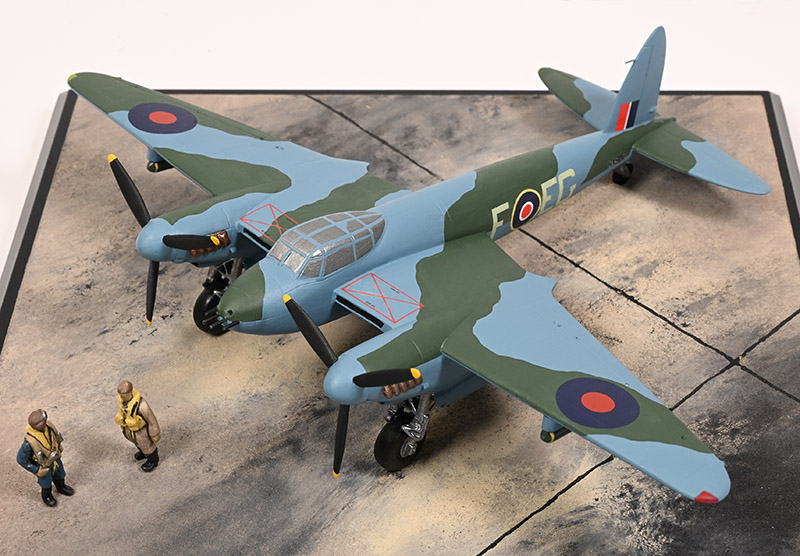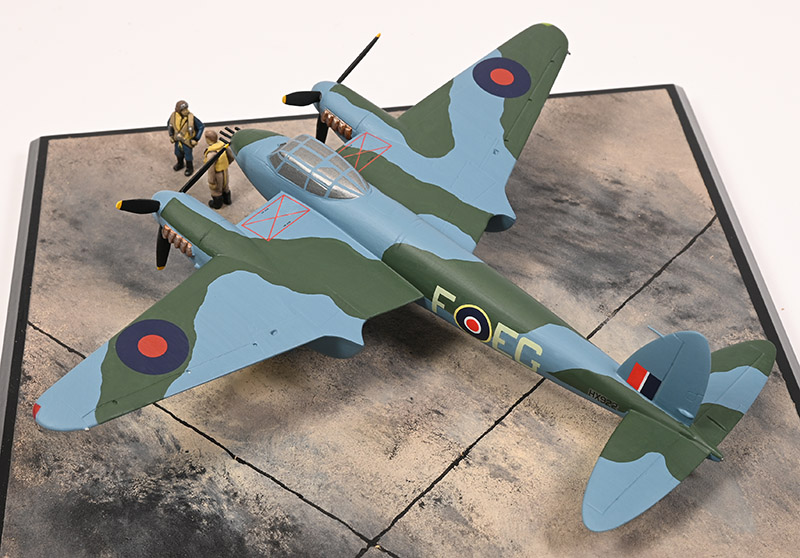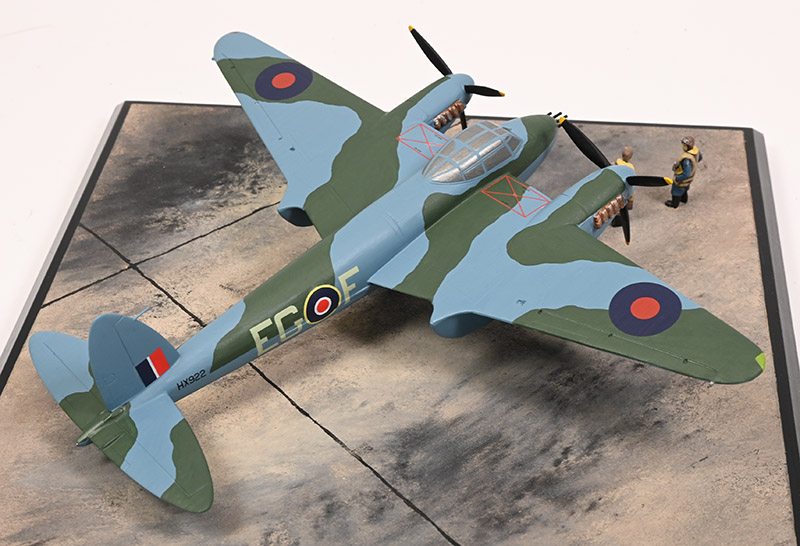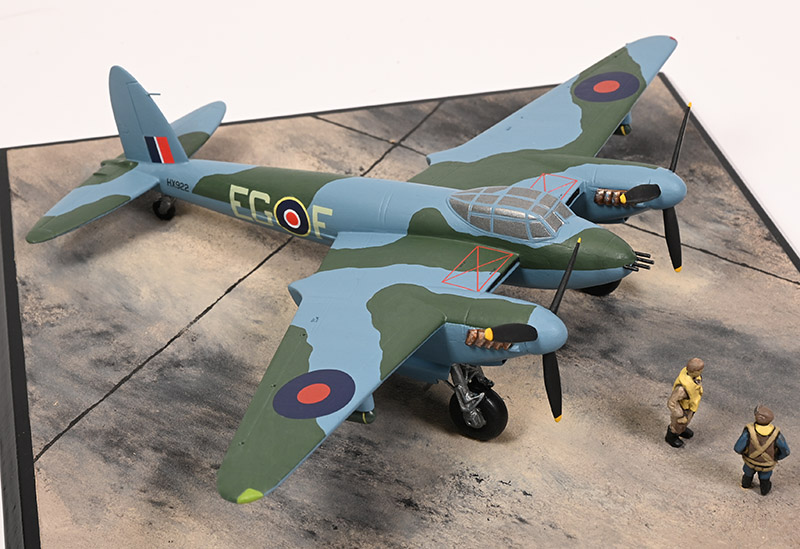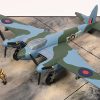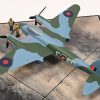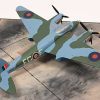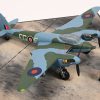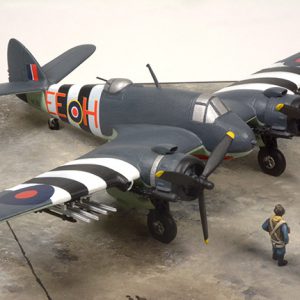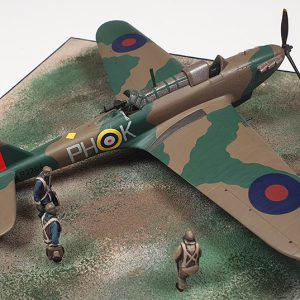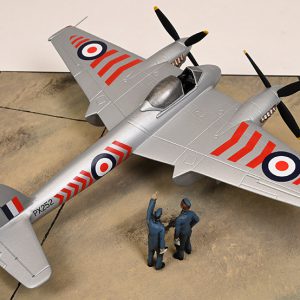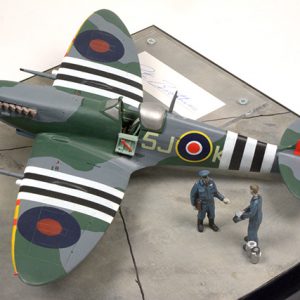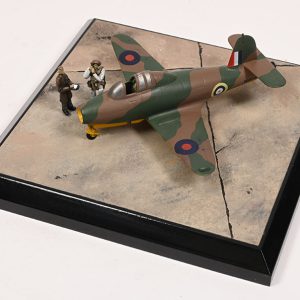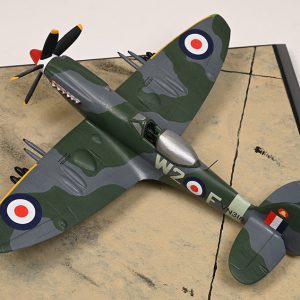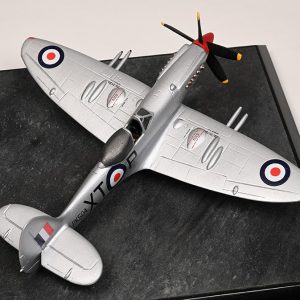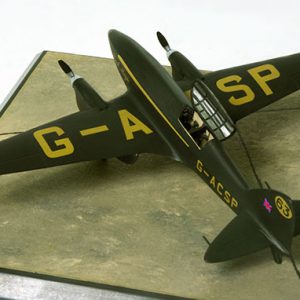de Havilland Mosquito FB Mk VI, HX922, EG-F
487 Squadron, Group Captain Percy Pickard and Flight Lieutenant John Broadley,
Hunsdon, England, February 1944
The de Havilland Mosquito originated from a design for a high-speed unarmed bomber based on the company’s experience with the Albatross airliner. de Havilland submitted its offering to the Air Ministry in autumn of 1938. However by that time, the Ministry had started looking for a heavily-armed, multi-role aircraft to which Geoffrey de Havilland responded ‘we believe that we could produce a twin-engine bomber which would have a performance so outstanding that little defensive equipment would be needed’. At a meeting in October of that year the Ministry showed very little interest and ordered the de Havilland Company to act as sub-contractors, building wings for other companies’ airframes.
A year later the project was revived and specification 1/40/DH was issued on 15th March 1940 for a “de Havilland Light Reconnaissance Bomber”. Prototype W4050/G made its first flight on 25th November of that year. First flown in 1942, the Mosquito FB Mk VI fighter-bomber, powered by two 1,460 hp Rolls Royce Merlin 21 engines, was intended for ‘intruder’ strike missions from the outset. It became the most numerous and widely-used Mosquito variant. Based on the F Mk II day fighter version, it retained the formidable armament of four Browning 0.303 in machine-guns in the nose and four Hispano 20 mm canon in the belly. But it was also given a bomb-bay behind the cannon, which enabled it to carry two 500 lb bombs internally (with fins cropped to fit) plus another two under the wings. Since it operated primarily at low altitude, the FB Mk VI was unpressurised, and retained single-stage supercharged Merlin engines.
Operation Jericho (Ramrod 564), which took place on 18th February 1944, was a very low altitude raid, on Amiens Prison in German-occupied France. The mission was conceived to blow holes in the prison walls, kill German guards and use shock waves to spring open cell doors. The French Resistance was waiting on the outside to rescue prisoners who escaped the mayhem and spirit them away.
The attack comprised eighteen FB Mk VIs, six from 487 Squadron RNZAF and six of 464 Squadron RAAF. Rather grimly, six more Mosquitos of 21 Squadron were to follow up in case the raid failed and bomb the gaol, killing the prisoners. A photographic reconnaissance (PR) Mosquito was laid on for the Royal Air Force Film Production Unit, to film the raid. The intruders breached the walls, prison buildings and destroyed the guards’ barracks. Of the 832 prisoners, 102 were killed by the bombing, 74 were wounded and 258 escaped, including 79 Resistance and political prisoners; two-thirds of the escapees were recaptured. Two Mosquitos and a Typhoon fighter escort were shot down and another Typhoon was lost at sea. The raid is notable for the precision and daring of the attack.
Taking off from Hudson at 11:00 hrs Group Captain Pickard, piloting HX922, EG-F “F-Freddie”, brought up the rear of the second wave of the attack, assessed the damage and had the unpleasant task to call on 21 Squadron if needs be. Seemingly, Pickard lingered too long over the target and as he turned for home, his Mosquito was attacked by the Focke Wulf Fw 190 of Feldwebel Wilhelm Mayer from 7/JG 26, who shot the tail off the Mosquito. This was Mayer’s 13th aerial victory. Both Pickard and his navigator John Broadley were killed in the ensuing crash at St Gratien, 8 miles north of Amiens, France.


